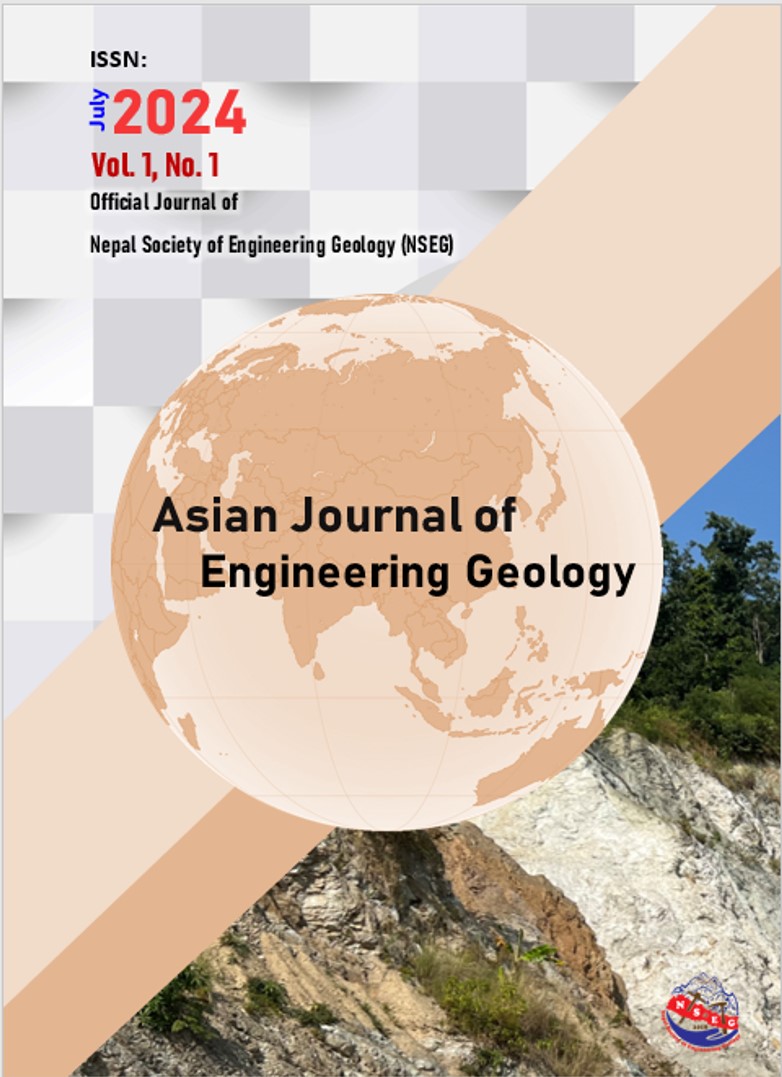Submissions
Submission Preparation Checklist
All submissions must meet the following requirements.
- This submission meets the requirements outlined in the Author Guidelines.
- The Submission uses MSWord Template of the journal.
- This submission has not been previously published, nor is it before another journal for consideration.
- All references have been checked for accuracy and completeness.
- All tables and figures have been numbered and labeled.
- Permission has been obtained to publish all photos, datasets and other material provided with this submission.
Articles
Section default policy
Extended Abstract
Please use MSWord Template for manuscript preparation for Extended Abstract of National Seminar on Engineering Geology. Click here to download template.
Privacy Statement
The names and email addresses entered in this journal site will be used exclusively for the stated purposes of this journal and will not be made available for any other purpose or to any other party.
Copyright Statement
To safeguard the legal rights and interests of both the journal and authors, and to elucidate the copyright ownership of manuscripts, the following statement is provided:
- The authors affirm that the submitted paper has not been previously published and is not under consideration for publication elsewhere.
- Authors must assert that their submitted manuscript is an original work, devoid of any infringement on rights or disclosure of confidential information. They guarantee the absence of intellectual property disputes related to authorship order and confirm that it does not incorporate material from copyrighted sources without proper identification through quotation marks and/or appropriate citations.
- Following publication in the journal, authors retain copyright of their articles. While authors grant the journal the right to publish, index, and store the article on the journal website for public access, they still maintain copyright ownership.
- All published works are licensed under a Creative Commons Attribution 4.0 International License. This implies that authors reserve proprietary rights, including patent rights, and possess the freedom to copy and redistribute the material in any medium or format. Authors can also utilize all or part of the article in future works, remix, transform, and build upon the material for various purposes, including commercial endeavors.
- Under the Creative Commons end user license, readers can reuse portions or extracts from the published article in their own works, provided proper attribution is given to the original work and its author.




